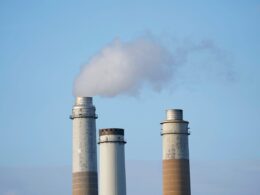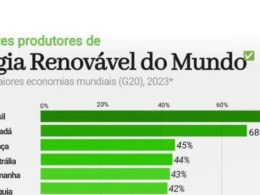The health strategist
institute, portal & consulting
for workforce health & economic prosperity
Joaquim Cardoso MSc.
Servant Leader, Chief Research & Strategy Officer (CRSO),
Editor in Chief and Senior Advisor
January 19, 2024
This executive summary is based on the article “Latin America to play an essential role in the global transition to a more secure and sustainable energy system”, published by IEA on November 8, 2023.
What is the message?
The International Energy Agency’s (IEA) first-ever comprehensive Latin America Energy Outlook emphasizes the region’s substantial energy and mineral resources, coupled with a robust clean energy legacy, positioning it as a key player in global energy transformations.

ONE PAGE SUMMARY
What are the key points?
Renewable Energy Leadership: The region boasts one of the world’s cleanest electricity sectors, generating 60% from renewables, led by hydropower. Strong wind and solar resources, especially in Brazil, Mexico, Chile, and Argentina, offer promising prospects for clean energy industries.
Diverse Energy Resources: Latin America and the Caribbean hold about 15% of global oil and natural gas reserves and play a crucial role in producing minerals essential for clean energy technologies, such as lithium, copper, and silver.
Policy Gap: Despite ambitious pledges from 16 of the 33 countries to achieve net-zero emissions, the current policy landscape projects continued reliance on fossil fuels, especially in road transport, hindering progress on clean energy transitions.
Renewable Potential: Fulfilling countries’ net-zero pledges could see renewables meeting all new energy demand by 2030, enabling increased oil exports, competitive hydrogen production, rising biofuel production, and doubling revenues from critical minerals.
Key Actions: The report outlines four actions to reduce energy-related CO2 emissions: accelerate renewable adoption, advance electrification in industry and transport, enhance energy efficiency, and improve access to clean cooking solutions.
What are the key statistics?
CO2 Emissions Gap: Accelerating renewables accounts for 40% of the emissions gap between current projections and achieving announced pledges.
Financial Investment: To meet clean energy pledges, financing for projects needs to double to USD 150 billion by 2030 and increase fivefold by 2050.
Access to Modern Energy: Approximately 17 million people lack electricity access, and 74 million lack access to clean cooking supplies in the region.
What are the key examples?
Renewable Dominance: If pledges are realized, renewables could meet all new energy demand by 2030, facilitating a rise in oil exports, competitive hydrogen production, increased biofuel production, and doubled revenues from critical minerals.
Methane Emission Reduction: Major producers can cut methane emissions from oil and gas operations by nearly 80% at low cost, supporting the Global Methane Pledge.
Conclusion
While Latin America and the Caribbean hold immense potential to shape the global energy landscape, the report underscores the need for substantial policy adjustments, increased investment in clean energy projects, and a people-centric approach to ensure universal access to modern energy.
The IEA stands ready to support the region’s governments in advancing their clean energy transitions, fostering a more secure and equitable global energy system.
To read the original publication, click here.












